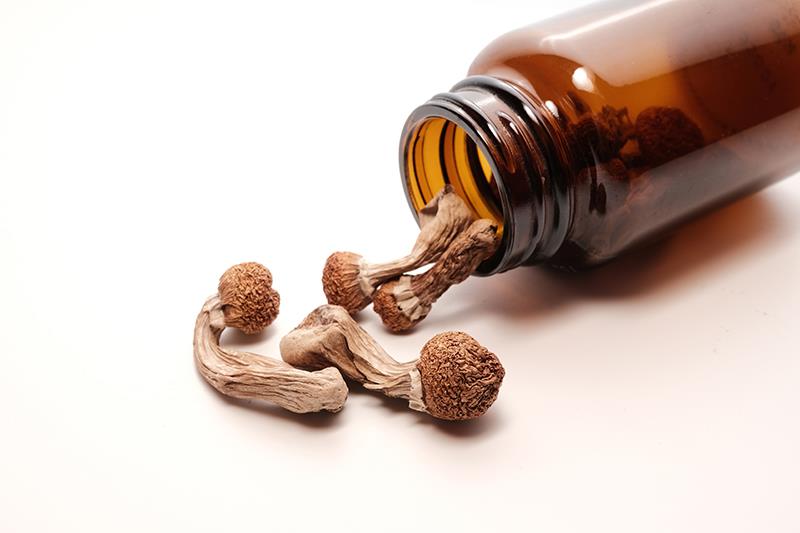Psilocybin: A new paradigm for treating postpandemic depression?





Healthcare workers who developed depression in the course of frontline work during the COVID-19 pandemic experienced substantial reductions in symptoms following psilocybin treatment, as shown in a small randomized clinical trial.
The mean Montgomery-Asberg Depression Rating Scale (MADRS) score at day 28 decreased to a greater extent from baseline in the psilocybin arm than in the niacin arm (−21.33 vs −9.33; mean difference, −12.00, 95 percent confidence interval [CI], −17.67 to −6.33; p<0.001). [JAMA Netw Open 2024;7:e2449026]
For symptoms of burnout, the psilocybin arm showed a larger reduction in the Stanford Professional Fulfillment Index (SPFI) score compared with the niacin arm, although the difference did not reach statistical significance (−6.40 vs −2.33; p=0.05). As such, the change in PTSD symptoms, as measured using the PCL-5* score, was not statistically tested (–16.67 vs −6.73, respectively).
“To our knowledge, this trial is the first to demonstrate the utility of psilocybin therapy in the treatment of … moderate to severe symptoms of depression [in this population],” the investigators said. “The results establish psilocybin therapy as a new paradigm of treatment for this postpandemic condition and add to the evidence of psilocybin therapy for depression.”
A partial agonist of the 5-HT2A receptor, psilocybin induces neuroplasticity, likely explaining its therapeutic benefits. The investigators pointed out that the study drugs were administered in a structured setting with preparation, medication, and integration sessions, conducted by trained clinicians. The significant difference between the psilocybin and niacin arms, despite identical counselling, underscores the unique therapeutic potential of psilocybin, they added. [Neuropharmacology 2023;231:109504; JAMA Psychiatry 2021;78:121-122; Sci Rep 2024;14:2929; J Psychopharmacol 2018;32:725-731]
As for the lack of a significant effect on burnout symptoms, the investigators noted that the small sample size may have limited the statistical power of the trial. “Furthermore, while the significance of the change in PTSD symptoms was not analysed due to the hierarchical analytic plan, the 16-point decrease in PCL-5 scores for the psilocybin arm was well above the 10-point decrease considered clinically meaningful.” [Psychol Assess 2022;34:197-203]
A total of 30 healthcare workers (mean age 38 years, 50 percent female) participated in the trial. These included physicians, advanced practice practitioners, and nurses who provided frontline care for more than 1 month during the pandemic and had no prepandemic mental health diagnoses. These participants were randomly assigned to receive psilocybin 25 mg (n=15) or niacin 100 mg (n=15) orally during the medication session.
“The efficacy of psilocybin in this trial is notable given that 100 percent of the participants had previously tried counselling and more than 50 percent had tried an antidepressant. Their rapid and sustained response indicates that psilocybin therapy is a new paradigm of treatment for the postpandemic depressive symptoms in clinicians,” the investigators said.
“Further research is warranted to assess the role of psilocybin therapy in meeting the well-being challenges faced by clinicians in the workplace,” they added.